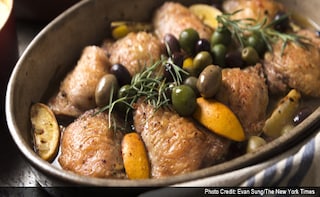A good cook needs an assortment of chicken recipes up his or her sleeve. It's fair to say most carnivores like chicken, but even chicken fans prefer a bit of variety, a break from the familiar roasted, fried, grilled.
Advertisement
Advertisement
Advertisement
Advertisement
For the latest food news, health tips and recipes, like us on Facebook or follow us on Twitter and YouTube.
Advertisement
Tags:
